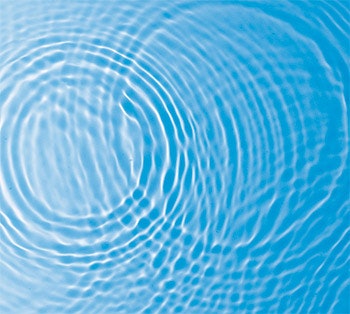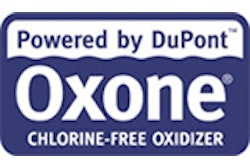
Filter cleanings are not all of a kind. Some are as easy as flipping a switch and watching till the water runs clear. Others are like wrestling in middle school gym class — a sweaty, awkward, unwilling chore about which you have little choice.
In our industry, D.E. cleanings are often sweaty and awkward, and while service technicians are not exactly unwilling to do them, very few look forward to the task.
Rich Tarricone, a 30-year industry veteran and owner of Aquatic Pool Systems, Sarasota, Fla., takes a common position on the matter. “I’m not a big fan,” he says. “A few times a year you have to take them apart and clean them with a high pressure hose, and the D.E. gets everywhere, sometimes on the side of the house or on the landscaping, or just all over. I’ll get wet, and get D.E. on myself, too — sometimes head to toe.”
Those who have never performed this duty may wonder why the removal of small D.E. granules from fabric on a D.E. grid turns into such a wild sopping melee. MacDowell explains, “The grids are curved, so in order to get them completely clean, you have to change direction around the curve, and just like when you wash a car, you wind up getting wet. When you hit the fender or wheel well, or when the wind is blowing in your face, it sprays back at you. It’s the same thing with a D.E. grid.”
Adding further challenge to the mission, local regulation prevents the rinsing of D.E. down a convenient drain or into the street, so service pros are forced to dispose of it on the property. MacDowell hears customer complaints about the strange white powder that never seems to disintegrate, but remains in clumps here and there in the garden. It’s not the fact that D.E. is a recognized carcinogen that bothers them, she says. “Mostly they just don’t like the way it looks on their lawn.”
But we’re getting ahead of ourselves. First you’ve got to get the D.E. grids out of the tank before you can spray the water/D.E. mixture all over yourself and the petunia beds. Grid removal sounds a lot easier that it actually is.
The job is to simply pop the lid off the tank and pull the D.E. grids out. But D.E. filter tanks can be three and a half feet tall; that’s belly button height on your shorter service tech. And with eight grids in the manifold, a through-rod holding them all together, the weight of the D.E. and everything dripping wet, you’re looking at roughly 40 pounds.
Which isn’t too bad, but consider that you’re leaning out over a cylindrical tank and pulling that 40-pounds straight up from the belt buckle. Try it sometime with a 40-pound bag of rock salt; see how many times you can do it before they put you in traction.
Local codes have added a special twist to this exercise for Tarricone. “Down here, awhile ago, they had a code that in certain neighborhoods, the equipment had to be three feet off the ground. The old pool guys might build a step stool or something to climb up to it. That’s all still there.”
So in this variation, which might be featured in the 2014 edition of American Gladiators, the service technician must climb a swaying, creaking set of wooden steps before attempting the D.E. clean and jerk.
Other strange impediments include the occasional squeaky-tight equipment pad. “For some reason,” MacDowell says, “the builder sometimes leaves you very little space, either to get to the filter tank, or space above it so you can lift the grids out. There’s an enclosure built above it and as you try to get the grids out, you’re bumping up against that.”
“Sometimes when I’m talking to builders I’ll say, “You hate service people, don’t you…what were you thinking when you built that equipment pad?”
You do have the option to take the grids out individually, MacDowell adds, but that takes longer.
Come Together, Right Now
So you’ve got the grids out and you’ve managed to get them rinsed off. There may be an eternal white substance sprinkled over the garden, but the fabric is clean.
Almost done? Actually, the worst may be yet to come. Reassembling the grids into the manifold, lining them up under the slotted holding wheel and wiggling everything in together can go easy or hard, depending on the day, MacDowell says. “Sometimes it goes right in and other times you’re messing with it for five or 10 minutes to get all the grids lined up properly.
“There is one model in particular, which is about half the D.E. filters we service, that has a lid that is extremely difficult to get back on. You need three or four hands, a couple of clamps and a pair of channel locks and enough lube on the O-ring to get this lid back on right.
“And as you’re struggling with it, trying to get that lid down, you’re leaning up against the tank and you’re getting O-ring grease all over yourself. This is why, in my opinion, between the dirt, the DE, and the grease from the tank, D.E. filters are the worst cleaning job to deal with.”
Given all that, it’s no surprise that sometimes service pros find perfectly valid reasons to put off a D.E. cleaning. And strangely enough, D.E. is actually quite accommodating in this one aspect:
If you look at D.E. under a microscope, its structure has a lot of tiny facets. And if you simply stir up used, dirt-coated D.E. (or “bump it” in the industry parlance,) you will expose unused, uncoated D.E. facets, which can collect more dirt.
Some D.E. filters come equipped to make this a quick job, Tarricone says. “There’s a little handle to make it easy to stir up the D.E.. So if you show up and the filter’s dirty and you don’t have any D.E. on you or maybe enough time, you can agitate the handle, and it stirs the powder up, and it buys you a few days or even a few weeks until you can get back and take it apart.”
Easy Does It
Much more palatable among filter cleaning assignments is the cartridge hose-down. It still takes time, because you still have the same tank and clamp to take off and put back on, but instead of 8 grids you have 4 cylinders, and you’re just rinsing them off.
It’s easier to stay dry hosing down cartridges,” MacDowell says, “because they’re cylinders, and you can stand far enough back with a high pressure hose that you don’t get covered. And all that’s coming off is dirt, so you can clean them anywhere — in the street, wherever.”
“And sand is the easiest of all. You just turn a valve with one hand, you got a sandwich in the other, and you’re cleaning the filter. You wait until the clear water goes through, and you’re done. We don’t even charge for sand cleanings.”
In summary, then, D.E. is a pain to clean, cartridge is easier and sand is easiest of all. But when ranking ability to trap fine particulate, this order is reversed. So MacDowell looks at cartridge as a good compromise — easier to clean than DE, but with a tighter particulate filter than sand.
“I see cartridge as a ‘happy medium,’” she says without laughing. “When I talk to people about a new filter, I tell them cartridge is the way to go because the regulations on D.E. are only going to get stronger.”
Cloggers
Anyone in the service business is familiar with the standard sources of filter buildup, everything from bug bits to flocculated flotsam, but there are a couple of new cloggers on the sand beds/cartridge elements/D.E. fabrics of America. One is phosphate remover, the increased use of which has not gone unnoticed by the people who are responsible for keeping filters clean.
“Now that we’ve realized that phosphates are a food source for algae, people are using phosphate removers to treat pools, and these are mucking up a lot of filters,” says Tarricone. “And you can’t get that stuff out of the filter.
“In Florida, we normally get about a year out of a filter cartridge. But if you’re doing a phosphate removal, you’re probably going to fry the filter cartridge right there. You get this wet flowery muck in the pool and filter, and even though you rinse the filter out, it gets embedded in the polyester spun filter media, and you can’t get it out. So we have to warn the customers when we do them.”
MacDowell’s company doesn’t use phosphate remover very often; what she finds more frequently in the filter nowadays is great globs of sunscreen. “People are slathering up with more and more sunscreen, and that is really clogging the filters. Oil will clog a filter much more quickly than normal dirt from a pool — it will really muck up a sand filter, especially. And when you backwash, that oil is hard to remove.”
Morale Maintenance
These constant encounters with great globs, flowery muck, ordinary filth and strange white powder mark filter cleaning as one of the industry’s dirtiest jobs, but most service techs take a philosophical approach. Somebody has to do it.
“Yes, it’s a dirty job, but in general, I wouldn’t say it impacts morale among the technicians. Except when you have a situation where your heater repair technician goes out on a call, and finds the heater’s not working because there’s poor flow through a dirty filter, and now your repair technician has to clean a D.E. filter,” MacDowell says with a laugh.
“They don’t like doing service work.”
Kristen MacDowell, service manager, VivoPools, Los Angeles Kristen has worked in the industry for 24 years, in various capacities and companies, including BioLab, Hayward and Jandy. She had a pool service company for 5 years. She is currently service manager with VivoPools, where she is a CPO and also teaches and certifies technicians.
Rich Tarricone, owner, Aquatic Pool Systems, Sarasota, Fla. Despite his youthful appearance, Rich is a 30-year veteran of the pool business and recent winner of Pleatco’s Perfect Pool Guy Award for 2010.












































